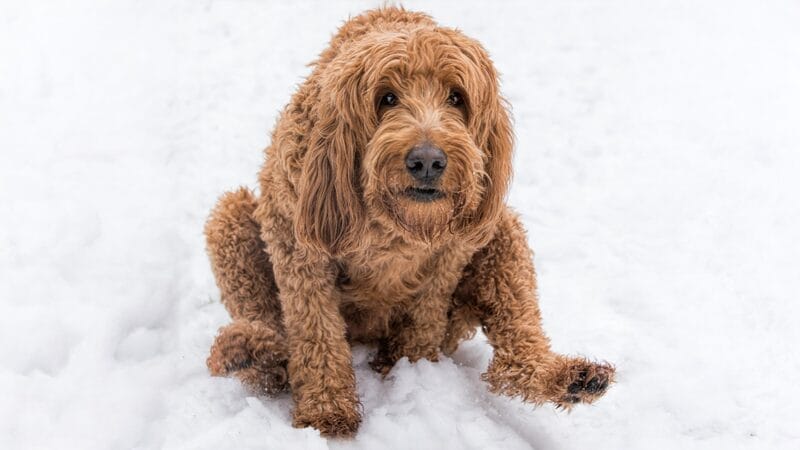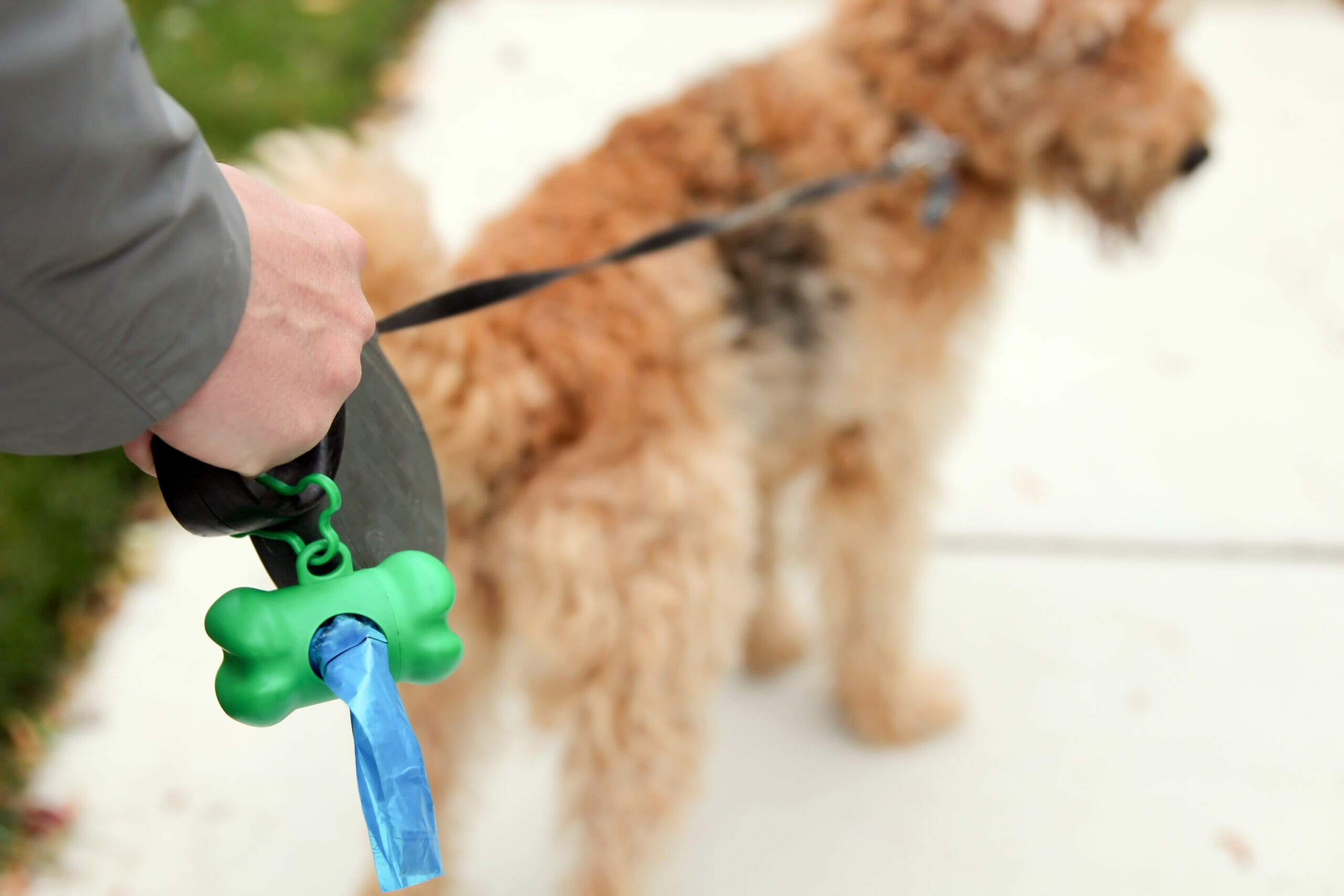
Dog Behaviors: What They Mean and When to See a Veterinarian
Dogs share several common behaviors. Learn what they are, what they mean, and when to see a veterinarian.
Dogs possess unique personalities and quirks, but there are several common behaviors that many dogs share. Our MedVet experts share some of these common behaviors, their meanings, and when you should seek advice from your veterinarian to ensure your dog’s wellbeing and help strengthen the connection you share with them.
Oral and Self-Care Behaviors in Dogs
Eating Poop (Coprophagia)
Eating poop is a common behavior in dogs, and even healthy dogs may engage in it. There are several reasons why dogs might eat their poop, including being confined to small spaces, experiencing anxiety, seeking attention from humans, or mimicking behavior they observed from their mother. However, if your pet regularly eats poop, it could be a sign of underlying issues such as nutritional deficiencies, boredom, or medical conditions, such as intestinal disease, pancreatic insufficiency, diabetes, or Cushing’s Disease.
If your dog is frequently eating poop, it’s important to consult your veterinarian to rule out any potential health problems. Additionally, dogs who eat poop due to boredom, anxiety, or environmental factors may benefit from the guidance of a behavioral expert.
Changes in Appetite or Sleep Patterns
Like humans, there may be days when your dog doesn’t want to eat as much as they usually do. If this behavior happens occasionally, you likely don’t need to worry. Several common causes of a more persistent reduced appetite in dogs include age, stress, or a medical condition. As dogs grow older, they may not use as much energy, especially if their movement or exercise decreases. This can make them less hungry. Additionally, their sense of taste and smell diminishes with age, which can affect their food preferences. For some dogs, changes in their environment or routine, such as travel, moving, or a change in the people they are normally around, may cause stress and subsequently skipping meals. They may need time to adjust to these changes to resume their normal eating routine. Medical conditions can also impact your dog’s appetite. If they are injured, have a tooth or gum problem, or are dealing with an underlying health issue, they may refuse to eat, especially if the action is causing them pain.
Changes in your dog’s sleep patterns can also be influenced by many of the same factors that cause a loss of appetite. If your dog has significant changes in their appetite or sleep patterns, consult your veterinarian. They can help determine the cause of these changes.

Panting
Dogs have a fur coat and unlike humans, do not sweat through their skin (except for a small amount through their pads). That’s why they pant: panting is the primary way dogs cool their internal organs and regulate their body temperature. However, dogs can still develop serious problems like heatstroke, even when they are panting, because minimal heat is transferred to the environment when the ambient temperature is very hot. A dog’s normal body temperature (99-102.5 degrees Fahrenheit) is higher than a person’s but the dangerous body temperature for heatstroke beginning is the same, so heat stroke can even occur more quickly in dogs. Learn more about heatstroke in dogs. Although panting is normal, especially after exercise or in hot weather, excessive panting without physical exertion can indicate stress, pain, or a medical condition, such as Cushing’s Disease. If your dog pants excessively, consult your veterinarian to rule out any health issues.
Licking and Chewing Their Tail
Dogs lick for various reasons, including showing affection, grooming themselves, and as a calming mechanism. Chewing is another natural behavior, especially common in puppies. It helps them explore their environment and soothe teething discomfort. However, excessive licking or chewing, particularly of their tail, can indicate boredom, anxiety, fleas, or a medical condition, such as food allergies or environmental allergies. Dogs may also have “problematic chewing” such as destroying items in your house because of separation anxiety. This behavior can also indicate compulsive behavior disorder, which generally requires veterinary intervention and possibly medication.
Offering appropriate chew toys can help redirect your dog’s chewing away from household items. However, excessive chewing and licking can also be a sign of compulsive behavior disorder, which often requires veterinary intervention and possibly medication.

Physical and Body Language Behaviors in Dogs
Digging
Digging is a natural instinct for dogs, often driven by boredom, anxiety, or the desire to bury toys or bones. Some dogs dig to create pits or dens to escape the sun and cool themselves off. These dens provide shelter and a sense of security. To discourage your dog from digging, increase their exercise with multiple walks a day and play with active toys like balls and frisbees. If your dog is digging holes to lie in cool dirt, they may need a shaded area, such as an outside doghouse.
Consider providing your dog with a designated digging area to help manage their behavior. Use sand or loose soil to create this zone. Make it attractive by burying toys for them to discover. When they dig in this area, reward them with praise. If they dig outside the designated zone, interrupt the behavior, firmly tell them “no digging,” and guide them to the digging area.
Pacing
Pacing can indicate anxiety, boredom, or a need for exercise. Your dog may also pace if they are waiting for something, such as a meal or someone to play with them. Pacing is another way for dogs to express excitement. If your dog is pacing for any of these reasons, regular walks and mental stimulation can help alleviate the behavior.
Dogs may also pace if they are in pain or experiencing a health issue, such as canine cognitive dysfunction. If your dog’s pacing seems unusual or they are showing other signs of discomfort, contact your veterinarian.
Scooting Their Butts
Scooting, or dragging their butt along the ground, is often a sign of discomfort or irritation in the anal area. This behavior can indicate impacted anal glands, worms, or other anal irritations. If your dog frequently scoots, leaves blood streaks after scooting or seems painful under their tail or while defecating then you should consult your veterinarian.

Sniffing Other Dog Butts
Sniffing other dogs’ butts is a common way for dogs to gather information about each other through scent. Every dog has a unique smell, and by sniffing another dog’s rear end, they can determine if they have met before. Dogs have a significantly higher ability to smell than humans, thanks to a greater number of scent receptors in their noses. This enhanced smelling ability allows them to communicate and understand the other dog’s health, diet, and emotional state. This behavior is normal and should not be discouraged.
Humping
Humping is a natural behavior in dogs, often associated with dominance, excitement, or play. This behavior is most common in male dogs, but female dogs can also use humping to express a feeling like dominance. If a male dog is not neutered, they may hump due to sexual hormones, especially when around a female dog in heat. Spaying or neutering your dog can significantly reduce hormone-driven humping behavior. While humping can be embarrassing, it is usually not a cause for concern unless it becomes excessive or aggressive.
Head Tilting
Head tilting is often a sign of curiosity or confusion. Dogs may tilt their heads to better hear or understand a sound or command. Head tilting is typically only done for a few seconds or a few minutes. If your dog’s head seems to be tilted constantly then this could be a sign of an ear infection or health condition like vestibular disease. Consult your veterinarian if you note consistent head tilting, especially if it’s accompanied by other signs.
Tail Wagging
Tail wagging is often associated with happiness, but it can also indicate excitement, fear, or aggression. So, a dog with a wagging tail isn’t always safe to approach. The position and speed of the wag can provide clues to your dog’s emotional state. If your dog is moving their tail in a fast and wide pattern, they may be excited. If the tail movement is slower and more subtle, it’s likely they are more relaxed. To be safe, you and your dog should always be cautious with dogs you’ve never met, even if they are wagging their tail.
Chasing
Chasing is a natural instinct for dogs, derived from their ancestry as predators when chasing prey was essential for survival. Dogs may chase other animals, cars, or even their own tails. Breeds that are natural hunters or herders, such as Collies, Hounds, and Terriers, are more inclined to chase. While it can be a fun game, it’s important to ensure that your dog’s chasing behavior doesn’t become obsessive or dangerous.
Vocal Behaviors in Dogs
Barking
Barking is a dog’s primary form of communication and can convey a variety of messages, such as excitement, fear, boredom, or a warning. Understanding the context and tone of the bark can help decipher its meaning. If your dog barks excessively without an apparent reason, it could be a sign of anxiety or pain. A change in the bark or a loss of bark can also indicate issues in the throat or larynx, where the voice box is located. Additionally, excessive or illogical barking can be a sign of cognitive dysfunction. If you notice any of these signs, consult your veterinarian to rule out any health issues.
Whining and Yelping
Dogs may whine when they want your attention. to show excitement, or to express anxiousness. Whining, howling, or yelping without an apparent cause can indicate pain or discomfort. If these vocalizations persist, seek veterinary care.
Growling
When a dog growls, it usually means they want you to stay back or stop touching them. Dogs may growl to protect their space or belongings, or if they feel threatened or scared by something or someone.
However, your dog may also growl when they want to play, especially if a toy is present. If your dog is growling aggressively, it can indicate fear, pain, or a medical condition, and may require veterinary attention.
Howling
Some breeds of dogs, such as Siberian Huskies, regularly howl. They may howl when excited, frustrated, or just out of curiosity. If your dog doesn’t usually howl or is howling along with signs they may be in pain, consult your veterinarian.

Sighing and Groaning
Just like humans, dogs may sign or groan when they are relaxing, taking a nap, or even to demonstrate disappointment. If your dog is experiencing behavioral issues along with sighing and groaning, discuss it with your veterinarian.
When to Seek Veterinary Care
While many of your dog’s behaviors are likely normal, if you notice any unusual or worrisome behaviors, consult your veterinarian. By being aware of your dog’s behaviors and seeking professional help when needed, you can provide the best possible care for your pet.
Learn more ways to keep your pets healthy and safe.
FAQs
Why does my dog eat poop?
Why do dogs lick?
How do I know if my dog is in pain?
Learn More
For ways to ensure your pet lives a happier, healthier life, visit our Pet Care Resources library.
Pet Care ResourcesContents
Learn More
For ways to ensure your pet lives a happier, healthier life, visit our Pet Care Resources library.
Pet Care Resources


